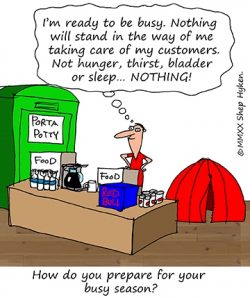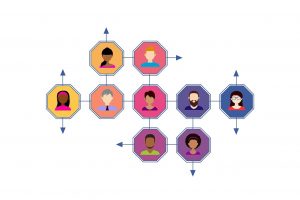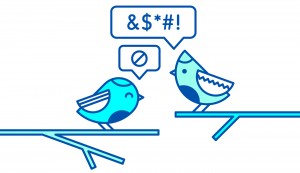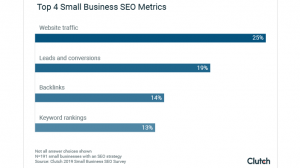Whether you are a nonprofit or an individual holding a fundraiser, it is crucial to master the art of using social media to maximize donations. This article offers a combination of practical, algorithm-based advice, as well as tips to appeal to the emotions and decisions of your future donors. Ensure that you have a strategy before setting up a fundraising campaign, and the results will pay off literally and figuratively!
Step 1: Decide Who, What, When, Where and How
You have seconds to convince a viewer to donate to your cause. Be strategic!
- Who is your target audience? What age, region and interest group are you hoping to reach?
- What are your goals? Are you raising money for startup costs, seeking ongoing monthly donations or hoping to cover a specific emergency cost?
- What time frame or time restraints are there? What is the end date?
- Where: Which social media platform best suits your demographic?
- How can you get donors’ attention? Images and videos? Emotional stories? Clear cut facts pertaining to the effectiveness of your project?
Step 2: Compare and Contrast Fundraising Platforms: Facebook Versus GoFundMe
There are advantages and disadvantages to each platform, so choose whichever platform best suits your cause.
- Using GoFundMe also allows you to market to multiple platforms, through newsletters, for example, instead of having your fundraiser run strictly through Facebook.
- GoFundMe charges a processing fee of 2.9% plus $ .30 per donation.
- GoFundMe can offer an advantage by promoting your cause for you:
Encourage followers of your page to share your fundraiser and tag their friends.
According to GoFundMe, “[Promotion] could come in the form of including you in their newsletter, writing a blog post about your campaign, sharing it on social media, text message or even reaching out to the larger media to get attention to the story.”
- While there are no fees for donations made to nonprofit fundraisers based in the US through Facebook, payment processing fees still apply. At a similar price point to GoFundMe, Facebook costs 2.60% plus $ 0.30 USD.
- One drawback to a Facebook fundraiser is that it can limit your ability to market it, as it has to stay on the Facebook platform.
Step 3: Accumulate Fundraiser Donors
- Research keywords and hashtags so interested patrons will find your cause. Think strategically about what causes, words and phrases would be used to find a fundraiser like yours.
- Write a post with a hook: You have seconds to grab the attention of someone scrolling. Use a statistic, frame a question or state a dire need.
- Tell a heart-wrenching story that pulls at the heart strings and share how you’re changing lives.
- Post testimonials or individual stories to personalize your fundraiser.
- According to GetFullyFunded, one creative fundraising idea is to run a time-limited campaign. For example, East Tennessee Mini Rescue has established “$ 5 Fridays” and raises as much as $ 500 a week from this campaign alone.
- Asking for a specific, small and manageable donation is always an effective way to get more people to participate.
Step 4: Create An Effective Fundraiser Post
- Make sure your post is shareable. This means your text will include all relevant information, like where the money will go and a link to a website where more information can be found.
- One tip from GoFundMe is to ensure that your fundraiser title is descriptive. This includes an “action-driven” statement, as well as the name of the person or organization funds are for.
- The call to action will go even further if there is a personal message about what this fundraiser specifically means to you. This will more likely strike a chord with those in your family and friend network.
Make the post emotionally engaging.
The more personal and engaging you make the fundraiser post, the more it will resonate with people.
- Tell a story. Some examples include the origin story of your organization, the experience of an individual your nonprofit helped or a compelling project the donations will fund.
- Use captivating images and videos to illustrate your point or explain your cause. Imagery with faces and people outperforms images with text or graphics. Also, make sure the image is high-resolution.
- Be clear about where the money will go. People will be more likely to hit “donate” if there is a clear-cut goal they feel they are making happen.
Step 5: Continue To Interact With Fundraiser Followers
- Track benchmarks and update followers on the progress. The programs used in fundraising campaigns include functionality to show off growing funds. It is an excellent idea, however, to post updates like “We’ve made it halfway to our goal!” or “So far, your donations have paid for 30 hot meals!”
- Continue to thank and follow up with donors to show your appreciation for their support. Their participation can come in the form of sharing your post, donating, tagging friends in the post or otherwise spreading the word.
- Facilitate conversation and ask questions. Encourage followers to engage with and comment on posts.
- Post regularly with useful statistics and information in bite-sized pieces to stay relevant and keep followers informed about your fundraiser.
- If donors share their email, send emails to help reach your goal. You can also use a newsletter or existing email blast as an opportunity to share a link to your fundraiser. GoFundMe even has an article with email templates to inspire you.
Step 6: Strategize Your Fundraiser’s Recurring Posts
- If someone has to spend a long time deciding whether or not to donate, you will likely lose them. Include a call to action and link to an easily accessible and well-designed page to learn more and donate. Convey urgency.
- Try different strategies: You don’t have to collect money all the same way or use the same type of posts. Each type of post will resonate with a different person. Observe trends of which posts garner more attention to see what is working and what isn’t.
As money accumulates, keep followers engaged by posting regularly.
- Encourage interactive posts by creating polls, surveys, asking for others to share a story or ask an open-ended question or encouraging people to tag friends or post a picture in the comments. Make sure you also engage with people without asking them to contribute money, time or material goods.
- Using a post scheduler such as Hootsuite to stay organized and post regularly by planning ahead. According to Nonprofit Hub, these are the optimal frequencies with which to post on social media platforms:
- 5 times a day for Twitter
- 1 to 2 times a day for Facebook
- 1 to 2 times a day for Instagram
- 1 time a day on Linked in, ideally in the morning
This article is intended to put you on track for a focused, persuasive and successful social media fundraiser.
Digital & Social Articles on Business 2 Community(42)








